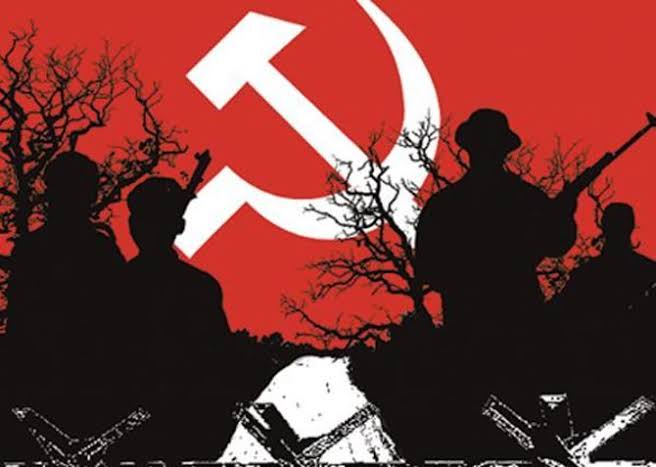Naxalism, its origin and how it has affected development in India

Armed Naxals attacked an iron ore mine in Chhattisgarh’s Narayanpur district on Saturday; set four vehicles engaged in construction work on fire. Two workers on site were reported missing after the incident; the incident happened in the Aaamdai iron ore mine. When the police of the Narayanpur district was alerted about this issue, they rushed to the spot where they engaged in crossfire with the rebels.
This is not the first time when papers are filled news of Naxal attacks, Naxal loot or Naxal massacres. On 25 May 2013, Mahendra Karma, a politician from Indian National Congress INC, who was the founder of Salwa Judum, an anti-Maoist force, was brutally killed by Naxalites. He was returning from a Parivartan rally meeting organised in Sukma. Alongside Karma, Vidya Charan Shukla, a leader of the Indian National Congress was murdered in the same brutal attack. Apart from this, in 2015, 25 Central Reserve Police Force (CRPF) officers were killed in an ambush with the Naxalites in the Sukma district of south Chhattisgarh. Apart from these highlighted cases, there are many incidents where Naxals have looted, killed, raped, tortured innocent men, children and women.
Let’s dwell deeper into why Naxalism exists in India-
What is Naxalism? What is its history?
Naxalism or left-wing extremism has been an issue for India since the 1960s. The Naxalites are primarily spread in Odisha, Andhra Pradesh, Chhattisgarh, Jharkhand and few parts of Andhra Pradesh also known as red corridor. It traces its roots to a revolt that happened in Naxalbari village of West Bengal in 1967. The Maoist movement was at its peak when the peasants, Adivasis and landless labourers looted granaries of the landlord of Naxalbari. The rebellion was brutally suppressed by police, which led to the mobilisation of Naxalites under the leadership of Charu Mazumdar, Kanu Sanyal and Jangal Santhal. These rebels were aided by the Chinese and people from nearby villages.
The Chinese media depicted this movement as spring thunder. Insurgents or Maoists gained political momentum when the Communist Party of India (Maoist-Leninist) merged with People’s War Group PWG. This group fought for peasants’ cause and the rights of landless labourers who were suppressed. The only problem with this noble cause was that PWG resorted to violent techniques like assassinations, attacks, looting, bombing of Andhra Pradesh’s landlords, politicians and upper caste leaders.
Naxalites are the Indian version of Maoists, who in turn are the Chinese version of Marxists. Naxalites are far-left political extremists who support Mao and use violent measures to prove their point. Many Naxalites have their representation in the Indian parliament by political parties like the Communist Party of India (Marxist-Leninist) liberation and Communist Party of India (Marxist-Leninist) Jana Shakti. Communist Party of India (Maoist) is deemed as a terrorist organisation.
In 2004 these two Maoist factions merged, which collectively strengthened the insurgents allowing them to spread in new areas. These insurgents had their carders where they trained people to use weapons, kill, launch shoulder rocket weapons and other explosive devices, et cetera. These insurgents controlled 200 districts in 2006. The financial aid increased their resources and even increased recruits in their organisation. To date, Naxalites have covered an extensive geographical area and broke records of all insurgent organisations, even Jammu Kashmir and the Northeast.
Why did the Naxalites gather so much momentum and sympathy? What are the reasons for the spread of Naxalism?
The historic wrongdoings-
The Britishers introduced the Forest monopolisation act so that forests can be peacefully exploited for their resources. After Independence, the Forest Conservation Act of 1980 denied tribals their right to forests. This was unfair because tribals are dependent on the forests for their livelihood; the act prohibited them from cutting even bark on a tree. Big corporate companies were given tenders to exploit these mineral-rich regions, because of which tribal populations were displaced. When a person is denied the right to livelihood and his home, he becomes an easy target for hate crimes. The Maoists targeted them and provided the tribals with hope, arms, ammunition and money.
Poor development policies- The regions affected by Naxalism has inter-regional and intraregional inequalities, which fuelled people’s anger. They turned towards Naxalism because of poor infrastructure, poor employment prospects, which increased disparity among upper caste and lower caste people. Naxals have recruits mostly from medical and engineering backgrounds. The reason behind it is poor employment prospects which force students with high education loans to resort to these measures. This led to an anti-government mindset amongst deprived people.
Poor implementation of land reforms-
The land reforms were poorly introduced in these areas, hence did not generate proper results. There was absence of necessary survey and data collection.
Constitutional issues-
The state government considers Naxalism as the central government’s problem. The central government states that unless states ask for their help, they cannot intervene. Naxalism is a security threat, or Naxalism is a social issue; this question has not been deliberated upon.
How has Naxalism destroyed economic progress?
The economics of Naxalism, apart from foreign funding, stands on four activities – extortion and kidnapping, loot, levy and destruction. Because of limited data, exact figures cannot be acquired, but everyone knows that Naxals have burned houses and vehicles, torched humans and destroyed highways, businesses, mining operations et cetera. No sane businessman or organisation would want to set up their office in an area constantly under Naxals’ threat. Law and order and stability is an essential factor for the development of business. It is because of this reason that these regions are marked by a lack of education, housing, employment opportunities, infrastructure et cetera.
Constant loot and killings also inhibit tourism, trade, telecommunications et cetera. Offices of Airtel, Reliance, BSNL et cetera were torched in Daltonganj, Dantewada, Sukma, Gadchiroli et cetera. This region has constant blackouts because Naxals have frequently destroyed high tension electric transmission towers and poles in areas like Odisha, Jharkhand, Bihar, Andhra Pradesh and Chhattisgarh. Electricity is important if a person wishes to run hospital, public utilities etc.
The Naxals have continuously targeted schools and railway lines. They have looted goods and passenger trains, causing derailment of Dnyaneshwari express and set fire to Vishakha express.
How has the government responded to tackle Naxalism?
The government of India launched Operation Green Hunt in 2010. It was an armed response against the growing problem of Naxalism, where the government deployed security forces in Naxal affected areas. After nine years of operation, the districts controlled by Naxalites have come down from 223 to 90.
Relief and rehabilitation policy – The government launched this policy to tap into the Naxalites who want to surrender and bring them into the mainstream. As a result, members of the Central Committee Politburo of Communist parties were murdered or arrested.
Aspirational districts program – this program was introduced in 2018 so that districts affected by Naxalism can register progress in critical social areas. Naxal controlled areas have a record of poor development. All these efforts have ensured that the number of violent crimes in affected regions have reduced.
Even after so much work, the root cause has not been addressed. The Centre and state government needs to follow a dual policy where rehabilitation and security are ensured simultaneously. In a research-backed book by Nandini Sundar, a DU professor called ‘the burning forest’, she described how villagers are stuck between judum and Naxals. Both these organisations don’t let the villagers live or leave. Surprisingly her book was banned by the government. The governments can work towards rescue and rehabilitation programmes of Naxal affected areas, jointly and simultaneously.




